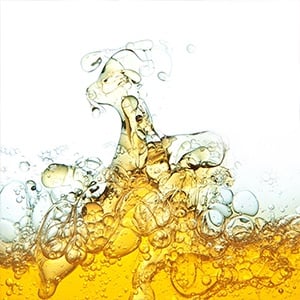
Are you familiar with the proverb ‘oil and water don’t mix’? In the case of oil & vinegar salad dressing, the saying rings 100% true. Yet nearly every cream/ointment on the store shelves, from hand lotions to fungal creams to hair conditioner, is comprised of both oil and water. When these products are opened, the consumer is faced with a single homogenous mixture and no separation of layers. Such stability is achieved through emulsions, which can be prepared in two forms: either oil-in-water (o/w) or water-in-oil (w/o). This critical difference in base ingredient may determine how the active drug is released, and how it will achieve its intended goal. Read on for the difference between w/o and o/w emulsions, and information on which one best suits your laboratory’s agenda. (1)
Oil-in-Water (o/w) Emulsions
Prepared by suspending oil droplets in an aqueous phase, o/w emulsions are found in most moisturizers (both day and night creams) and topical steroid products. Homogenized milk, although classified as a food product, is one of the most well-known o/w emulsion. Thicker than lotion and easier to spread than ointments, o/w-based creams work by penetrating the wall of the skin’s stratum corneum to achieve a local effect. (2)
All emulsions, whether o/w or w/o, require an emulsifier to provide them with stability; o/w emulsions often require more than one emulsifier for optimal stability, but a variety of emulsifiers exist to suit this function. Polysorbate, sorbitan laurate, and cetearyl alcohol are just a few examples of emulsifiers that are compatible with o/w emulsions.
Water-in-Oil (w/o)
In contrast to o/w, w/o emulsions are prepared by dispersing water droplets in an oil solution. Depending on the oil’s properties (e.g. viscosity and density), four distinct types of w/o emulsions exist, and range in stability. Most makeup products and sunscreen are w/o emulsions; additionally, it forms the base for dry/sensitive skin treatments due to its milder nature and ability to leave the skin’s lipid bilayer intact. (3)
In contrast to o/w emulsions, w/o emulsions only require one emulsifier to achieve stability; however, because the hydrophilic balance must be within a range of approximately 3-6, there is a limited number of emulsifiers to select from. Sorbitan stearate, lecithin, lanolin/lanolin alcohols, and glyceryl monooleate are some examples of viable w/o emulsifiers. Comparatively, o/w emulsions do not have the limitation of hydrophilic balance so confer a wider selection of emulsifiers.
Which to Select?
In the case of w/o compared to o/w, which is the better option to use? Unfortunately, this dilemma does not lend itself to a cut-and-dry answer; your choice will largely depend on the type of product you are making, which emulsifiers you have access to, and the equipment you have available. No matter which you choose, however, you will require a homogenizer to synthesize your w/o or o/w emulsion. The homogenizer will shear fluid by forcing it through a restrictive valve, forming a high-quality emulsion.
Pion's Technology offers homogenizers that are both high-quality and reliable, and which can help your lab produce nano/micro emulsions, dispersions, and suspensions to be incorporated into your pharmaceutical cream. Visit us here to learn more about our products.

